What Is Hojicha Tea?
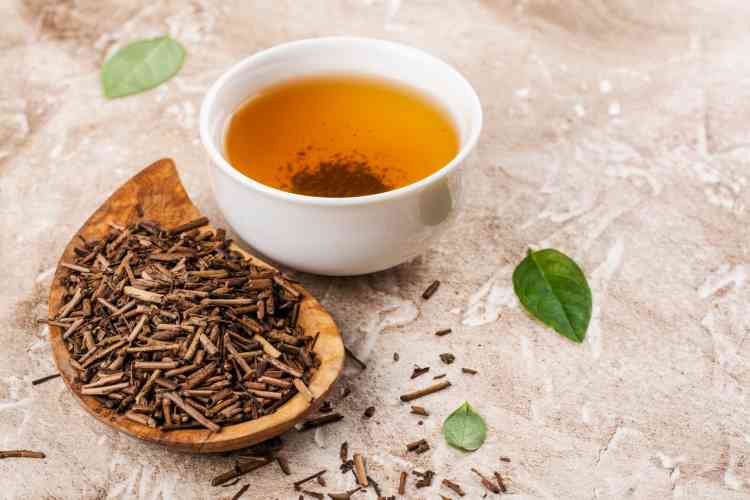
Hojicha is a Japanese green tea and a great choice when you are searching for a cup of warmth to snuggle up with on a chilly winter day. It has a distinctive nuttiness and slightly smoky flavor that many find appealing. The taste of this tea is inviting, but there are other reasons to choose it, including health benefits and versatility.
Are you searching for a warm beverage that is relatively low in caffeine? Do you want a new drink that packs a health punch? Hojicha is worth considering. This article provides more information about this tea, how to prepare it and the health benefits of adding it to your daily routine.
Jump to Section
- What Is Hojicha?
- What Does Hojicha Taste Like?
- Hojicha vs. Matcha: What’s the Difference?
- How to Brew Hojicha
- Hojicha Benefits
- Where To Buy Hojicha
What Is Hojicha?
Hojicha originated in Japan and is a roasted green tea. It primarily consists of roasted bancha, sencha or kukicha green tea leaves. The leaves are reddish-brown, and the tea brews into a reddish-colored liquid.
In Japanese, hoji means roast and cha means tea, giving meaning to the name of this beverage. It is unique from other green tea varieties because it goes through the roasting process. The leaves and stems are roasted at very high temperatures after being steamed. This process impacts both the flavor and the caffeine content.
Hojicha originated due to the innovative techniques of a tea merchant in the early 1920s in Japan. To use what would otherwise be wasted tea stems and leaves, he gathered them and used a hot charcoal roasting method. The resulting tea's color and flavor differed from other tea blends and preparation methods. Hojicha was the resulting tea, with a red hue and a smokier taste than other green teas.
While this green tea is best known as a beverage, it also adds a unique flavor to many sweet dishes, including hojicha ice cream.
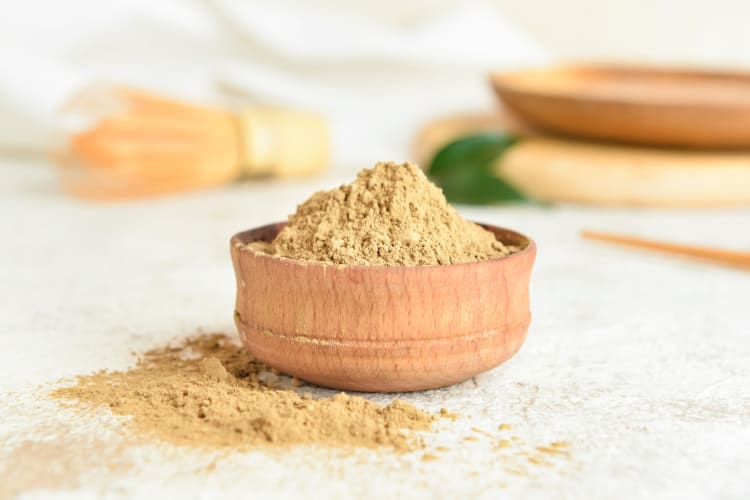
Does Hojicha Have Caffeine?
Like all green teas, this one contains caffeine. However, the roasting process reduces the amount of caffeine this beverage contains. The exact amount of caffeine varies depending on the types of tea leaves used. In general, however, this is considered a low-caffeine tea.
On average, a cup contains about seven to eight milligrams of caffeine. This amount is significantly lower than a cup of brewed coffee, which has around 95 milligrams, or other green teas at approximately 30 milligrams per cup. Choose sencha tea leaves if you want a cup of hojicha with more caffeine. These leaves contain 20 to 50 percent more caffeine than bancha or kukicha leaves.
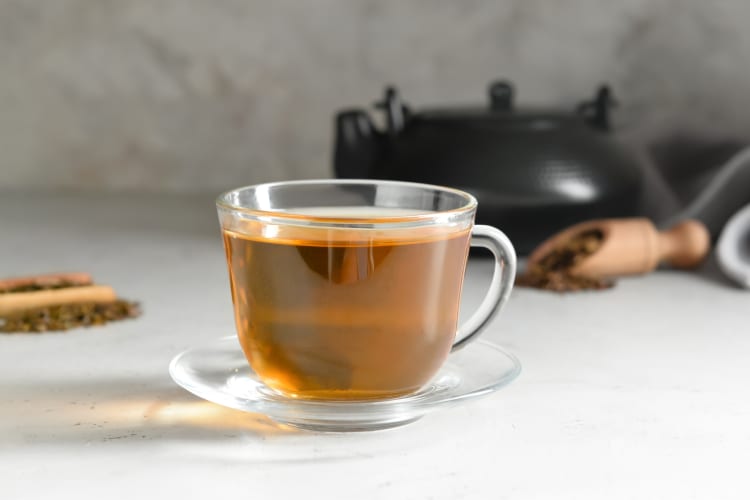
Hojicha Powder vs. Hojicha Leaves
There are two forms of this tea available: loose-leaf and powder form. Generally, loose-leaf tea has the most complex flavor profile of the two options and is a better choice for drinking, whether cold brewed or hot.
Using the powder form is quicker. So choose this if you are short on time. The powder is slightly creamier and nuttier. It has a milder flavor than the loose-leaf variety. Powder form is often preferred for use in recipes for baked goods like hojicha cake or hojicha cookies.
What Does Hojicha Taste Like?
Hojicha has a smoky flavor that is bold and rich. There is also a hint of natural sweetness. The roasting process removes the bitterness from the green tea leaves, giving the beverage a smoky and earthy flavor.
As a means of comparison, many other green teas have more of a vegetal and grassy flavor profile. Oolong tea has floral or fruity notes. Black tea is fully oxidized and has a bold flavor. The tea closest to it is kamairicha, which shares the smoky flavor but also some of sencha tea's vegetal characteristics.
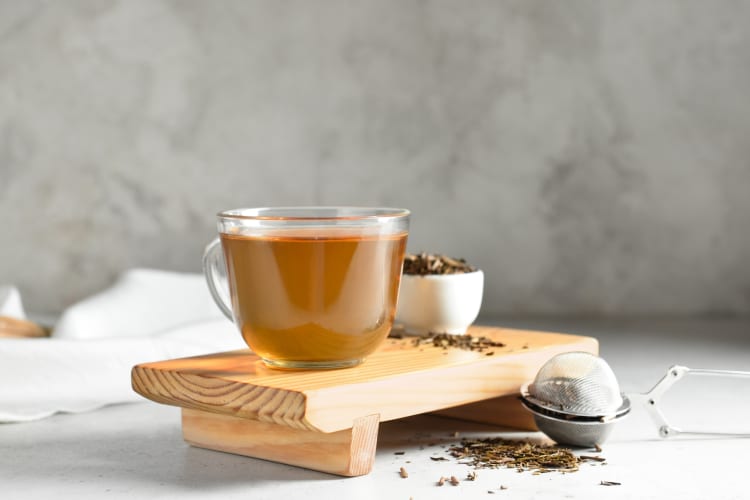
Hojicha vs. Matcha: What’s the Difference?
Hojicha and matcha are two popular Japanese green teas. They differ in some ways and are similar in others. A primary difference is their preparation method. While matcha is stone-ground, hojicha is roasted. The processes make for differences in both the appearance and flavor. Hojicha tastes sweeter than matcha, and its color is darker than matcha tea. Many people consider switching from coffee to hojicha easier than from coffee to matcha.
Another difference is in how the teas are made available. Matcha is only available in powder format, while hojicha is sold as a powder or a loose-leaf tea. Tea fans can prepare either option with water or milk, and many recipes benefit from the flavor addition of these green teas. They both also offer many health benefits and have less caffeine than coffee.
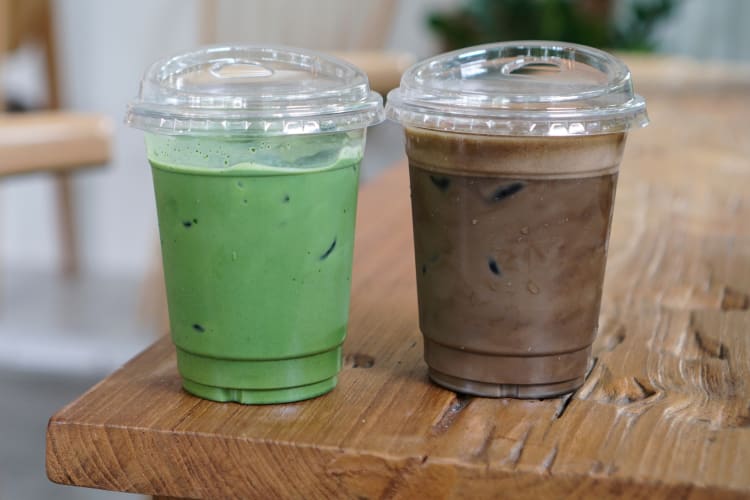
How to Brew Hojicha
How you brew your tea will impact the flavor and caffeine content. Japanese online cooking classes often cover this process. Finding in-person cooking classes near you can also make understanding how to brew your perfect cup of tea easier. A key element to remember is that your water's quality impacts your tea's quality. Always start with fresh water, bottled or filtered, which is considered best by many experts.
The secret to brewing the perfect cup of hojicha lies in the temperature of the water and the steeping time. Heat your water to just under boiling, around 194°F. It is essential to reach a temperature just below the boiling point because it protects the tea leaves from scorching, which can result in a bitter flavor.
Steep or soak your tea leaves in the water for one to two minutes. A longer steep time will provide you with a more robust flavor profile. Avoid steeping for too long or your tea will taste bitter.
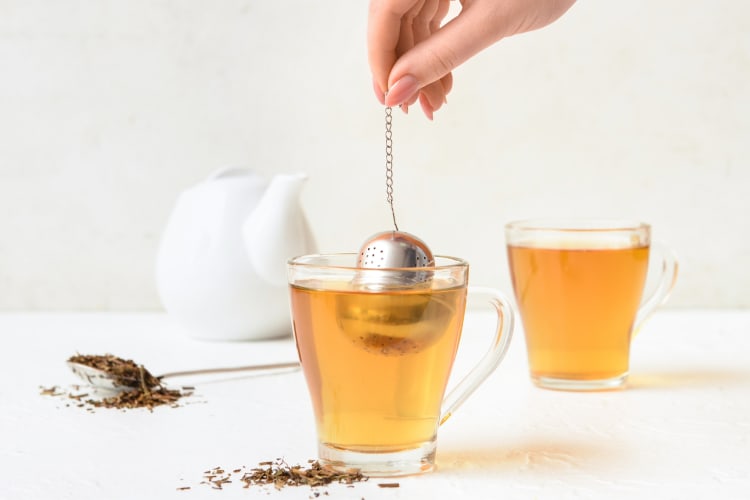
How To Make Hojicha Latte
One way to enjoy this tea is with your own creamy hojicha latte recipe. Here is a simple one to try:
- Heat milk (cow or plant-based; both work for this recipe) to where it is just below boiling point.
- Steep your loose-leaf or bagged tea in the milk for one to two minutes, depending on the desired strength. Generally, go for a slightly more intense tea flavor, as the milk will make it more subtle.
- Add your desired sweetener before enjoying your latte warm or over ice.
Making this hojicha latte with powder instead of tea leaves is also possible. Simply add your desired amount of powder to warm water and mix. Then, combine the tea with hot or iced milk and sweeten to your taste. Warm the milk in a pan before adding the tea for a creamier latte.
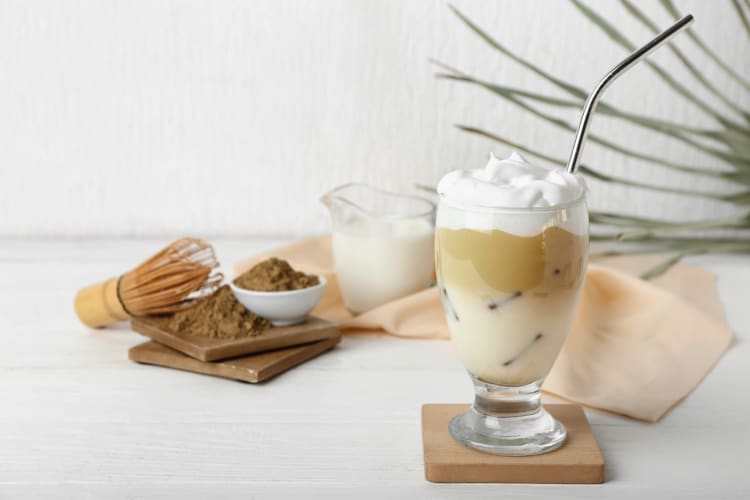
Hojicha Benefits
Many people are looking for information about how to start eating healthy, leading to the question — is hojicha healthy? The tea offers several health benefits, including a low caffeine content, stress-reducing properties and the inclusion of several vitamins and antioxidants.
Hojicha tea benefits include its content of L-theanine, which, as Healthline explains, has a calming effect. The notes of chocolate, caramel and wood also create a calming scent that makes this tea an inviting option to brew and savor. This green tea also contains vitamin C, which has anti-aging properties. Additionally, vitamins A and E offer anti-viral benefits and immune-boosting properties. Catechins in green tea may help reduce blood pressure and lower cholesterol while polyphenols may help reduce inflammation.
While the list of health benefits is impressive, it is essential to remember that all foods, including hojicha, have some drawbacks. The tea is best consumed in moderation, and most benefits are only realized if it is part of a healthy diet and lifestyle plan. Those with pre-existing health conditions should consult their doctor before adding this beverage to their diet.
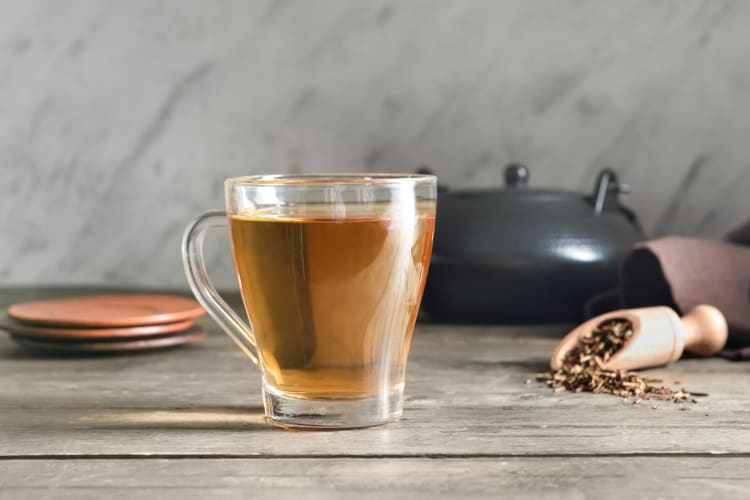
Where To Buy Hojicha
If you are ready to sample this green tea, it is available at many Japanese specialty stores, gourmet grocery stores and online retailers. To try a prepared beverage, visit a Japanese restaurant or tea store, a boba and milk tea place or a specialty coffee shop.

Hojicha is quickly becoming a popular option for individuals who want to realize the health benefits of green tea and reduce their caffeine intake. The tea has a unique roasting process that results in a nutty, smoky flavor. It is easy to drink and works well in many recipes. There are so many great reasons to try this incredible tea. One taste and it just might quickly become your new favorite morning beverage.
For even more ways to explore your favorite foods, check out other experiences happening on Cozymeal.



FOOD FOR THOUGHT?
Join the conversation.